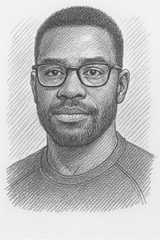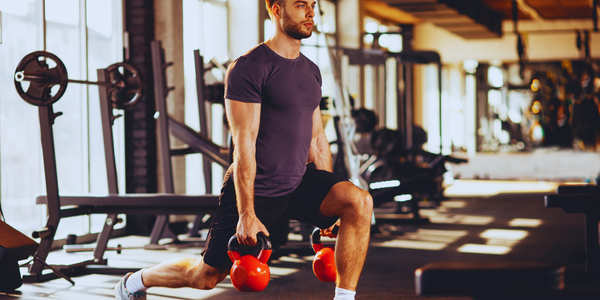This 2-Minute Strength Test Reveals Your Biological Age
Discover your biological age with our simple strength test age assessment. Take 2 minutes to measure your fitness level and learn how young your body really is

https://www.youtube.com/watch?v=nm7roKZX7Lc&pp=ygUMI3NpdGNyb3NzbGVn
Did you know failing a simple 10-second balance test can increase your mortality risk by 84%? Your chronological age might just be a number. But your biological age tells a deeper story about your health and how long you might live.
The Physical Fitness Assessment goes beyond just looking at your age. Researchers at Mayo Clinic have created a groundbreaking strength test age evaluation. It gives you important insights into your body's true functional capacity.
Muscle Endurance Evaluation is more than just lifting weights. It's about understanding how well your body performs under different physical challenges. This 2-minute test can reveal more about your health than years of medical records.
Key Takeaways
- Balance is a critical indicator of biological age and overall health
- A simple 10-second one-leg balance test can predict mortality risk
- Physical fitness matters more than chronological age
- Strength and balance decline can be measured and potentially reversed
- Regular exercise can maintain muscle strength and coordination
Understanding the Strength Test Age Assessment
Fitness lovers are finding a new way to check their health with Functional Capacity Screening. This method is different from just counting years. It looks at how well your body really works.
The Science of Biological vs Chronological Age
Chronological age is how many years you've lived. Biological age shows how well your body is doing. Age-Specific Strength Benchmarking gives a better idea of your health and fitness.
- Chronological age: Calendar years
- Biological age: Physical performance indicators
- Measurement through comprehensive physical assessment
Why Balance Testing Matters for Health
Balance tests are key in Athletic Performance Testing. They show a lot about muscle strength, nerve health, and overall health.
| Age Group | Balance Test Performance | Health Indicator |
|---|---|---|
| 25-35 | Excellent stability | High muscular coordination |
| 36-45 | Moderate stability | Beginning strength decline |
| 46-55 | Reduced stability | Increased focus needed |
Key Components of Physical Assessment
A full physical check looks at many things. It includes muscle strength, heart health, flexibility, and balance.
- Muscle strength evaluation
- Cardiovascular performance
- Flexibility assessment
- Balance and coordination tests
By looking at these areas, you get a holistic view of your physical capabilities. This view is more than just age.
How to Perform the One-Leg Balance Test
The one-leg balance test is key in Occupational Fitness Examination. It checks your physical function and biological age. This test shows how well your muscles work and your physical balance.
To do the test, just follow these steps:
- Stand on a flat, stable surface
- Choose your dominant leg
- Fold your arms across your chest
- Lift one foot off the ground
- Maintain balance for up to 45 seconds
This test shows interesting things about Geriatric Strength Profiling. Different age groups have different balance skills:
- Ages 18-39: Peak performance of 45.1 seconds with eyes open
- Ages 40-49: Slightly reduced balance, around 42 seconds
- Ages 50-59: Noticeable decline to approximately 40 seconds
Try the test with your eyes closed for a harder version. This can show more about your balance and how well you sense your body position.
Understanding your results is important. If you can't balance for at least 10 seconds, it might mean you're at risk of falling. You might need to work on your balance skills.
Conclusion
Knowing your Strength Test Age is more than just a number. The Lookup 7+ project shows that muscle strength peaks between 18-24. It then starts to go down after 45. This 2-minute test gives you key insights into your fitness level.
Your Functional Capacity Screening is a chance to grow, not a limit. By knowing your current strength, you can work on getting better. Home fitness exercises can help you regain strength and boost your health.
Being active is powerful. Studies prove that exercise can change your biological age. By doing strength and balance exercises regularly, you're not just stopping decline. You're making your body stronger and healthier.
Fitness is a personal journey that never ends. See your Strength Test Age as a guide for growth. With hard work and smart training, you can reach your best physical shape at any age.
FAQ
What is the difference between chronological and biological age?
Chronological age is how many years you've lived. Biological age shows your physical health and condition. It looks at muscle strength, balance, and fitness to show your body's real state.
How does a 2-minute strength test help determine biological age?
The 2-minute strength test checks balance, muscle strength, and fitness. It gives insights into your body's health, showing your biological age more clearly than just years.
Why is balance important in determining biological age?
Balance shows your health and fitness level. Studies link it to fitness, muscle strength, and living longer. Good balance means better health and coordination.
Can I perform the one-leg balance test at home?
Yes, you can do the one-leg balance test at home. It needs no special gear and can be done in a safe area. Stand on one leg for a bit, and try it with your eyes closed for more challenge.
How often should I perform this strength test?
Do the test every 3-6 months to see how you're improving. It helps track your fitness and biological age changes.
What factors contribute to biological age?
Biological age depends on muscle strength, heart health, balance, and more. These factors together show your body's real age and health.
Can I improve my biological age?
Yes! Exercise, strength training, and healthy eating can help. Also, managing stress and getting enough sleep are key. A healthy lifestyle can improve your physical condition.
Are balance tests different for various age groups?
Yes, balance tests change with age. What's good for a 30-year-old isn't the same for a 60-year-old. Tests use age-specific standards for accurate results.
How accurate is a 2-minute strength test in determining biological age?
The 2-minute test isn't a full medical check but gives useful health insights. It's a quick, easy way to see your fitness and age-related changes.
What should I do if I perform poorly on the balance test?
If you find the test hard, don't worry. Talk to a fitness expert or doctor to make a plan. Focus on exercises that improve strength, balance, and flexibility.
Source Links
- 5 Tests to See How Well You Are Aging
- Standing on One Leg Reveals How Well You’re Aging
- What Balancing on One Leg Can Reveal About Your Health and Aging
- Measure your fitness level with these simple tests
- Single leg stance or “One-legged stance test”
- A 30-Second Balance Test Can Indicate How Well You're Aging, Study Shows
- Normative values of muscle strength across ages in a ‘real world’ population: results from the longevity check‐up 7+ project
- Sex- and age-specific normative values for handgrip strength and components of the Senior Fitness Test in community-dwelling older adults aged 65–75 years in Germany: results from the OUTDOOR ACTIVE study - BMC Geriatrics
👉 Join the Active Man Community
Get expert tips, workout guides, nutrition hacks, and the latest trends delivered straight to your inbox every week. No spam — just actionable insights to help you live stronger, healthier, and better.





